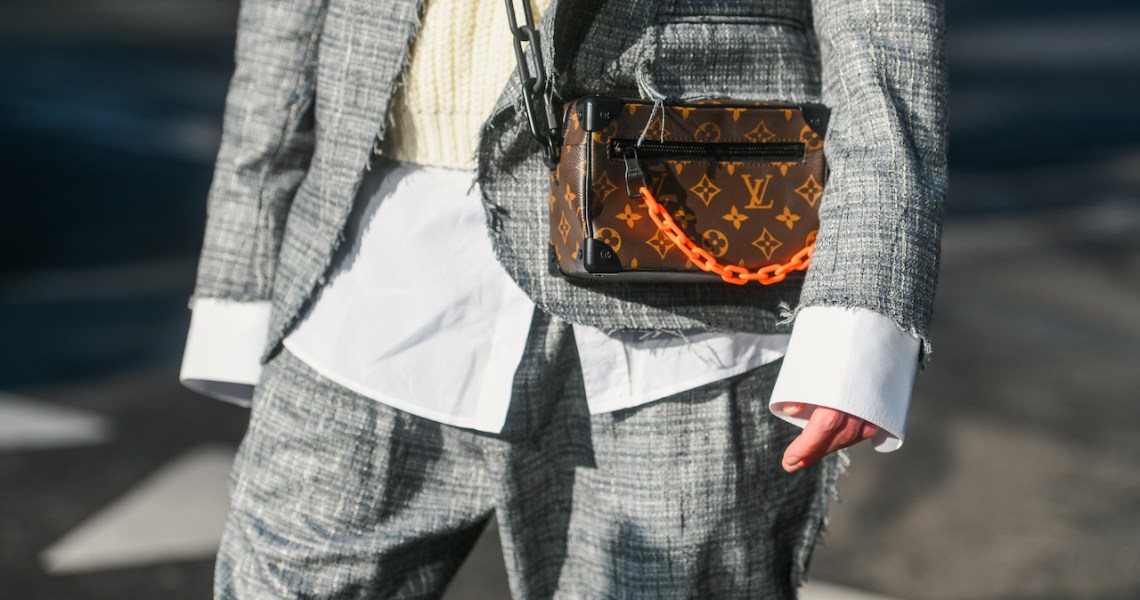On June 24, the livestream of Louis Vuitton’s spring 2022 menswear show, dubbed “Amen Break,” raked 131 million views across different social platforms in China. Among them: Kuaishou, which contributed 39 million, or nearly one-third, of the views.
Kuaishou, which translates to “quick hand,” is a Chinese short-video platform and a nemesis of TikTok’s local version Douyin. It was an unexpected platform choice for Louis Vuitton as its content is known for being geared toward China’s mass market, with audiences in less populous and less developed regions.
While the brand’s choice was a jaw-dropping one for the public, it was commendable according to marketing professionals.
For the first quarter of 2021, the average number of daily active users (DAUs) on the Kuaishou app and its mini-programs in China was 379.2 million, and the average daily time spent per DAU was 99.3 minutes, according to the company’s latest financial report. As of June 2019, around 158.8 million users had both Kuaishou and Douyin, according to market research firm QuestMobile. While the LV show garnered 39 million viewers on Kuaishou, it saw 41 million viewers via Douyin, according to the brand, which chose not to disclose views from Weibo and WeChat.
“What LV did this time killed three birds with one stone,” said Vicky Li, managing director of the China office of Digital Retex, the digital arm of Milan-based agency Retex Group that’s worked with brands including Saint Laurent and Loro Piana. “It shows that LV has [expedited] its steps in going to third-tier cities and below, where Kuaishou yields great influence. And in addition to everyday users, Kuaishou’s high-spending livestreamers are not to be neglected. The collaboration has also successfully [attracted] fashion media’s attention, which results in more free traffic for the brand.”
Jonathan Travers-Smith, CEO and founder of U.K.-based marketing agency Hot Pot China, echoed Li’s thoughts and called Kuaishou’s core users “luxury’s next consumption powerhouse.” One challenge facing established luxury brands is that top-tier cities like Beijing and Shanghai are suffering from “LV fatigue,” because younger consumers aspire to wear more niche designer brands that speak to their evolving identities, he said.
Meanwhile, “consumers in [lower-tier cities] have high aspirations and rapidly increasing incomes, making them attractive immediate [targets],” Travers-Smith said. He added that the move is “priming LV for future growth with new segments.”
Ad position: web_incontent_pos1
Interestingly, the Louis Vuitton spring 2022 women’s show, which took place a few days prior, was not featured on Kuaishou, but was heavily promoted on Weibo, as usual. As the first-gen social platform in China, Weibo is a platform where large celebrities enjoy tens of millions of followers that can be leveraged by brands during marketing events. LV’s global ambassador Kris Wu has around 51 million Weibo followers and newly minted brand ambassador Simon Gong has 16 million. Neither they nor LV have a Kuaishou account. LV partnered with youth magazine Nylon China, which just joined Kuaishou in early June, for the men’s livestream.
The partnership guaranteed reach to a younger fashion-conscious audience, said Travers-Smith. “The choice of media partner with the right follower demographic and visual aesthetic makes the partnership valuable, regardless of perceived differences in platform audience,” he added.
Last year, LV’s livestream debut on another social platform, Little Red Book, didn’t win much favor. It featured influencer Yvonne Ching and guest celebrity Chuxi Zhong, who later became the brand’s ambassador, introducing its summer 2020 collection, Many netizens called the setup, the concept and even the lighting “low quality.”
But the moves can also be deemed innovative. Over the last two years, LV has been “China’s first” to many strategies: It was the first luxury brand to have a video account on WeChat, the first to have an influencer take over its WeChat account, the first to launch on Little Red Book and the first to livestream on the platform, according to local media accounts.
When asked whether the entrepreneurial mindset of “trial-and-error” is fitting for luxury brands on new Chinese platforms, Li said that it depends on how long the brand has been in China and if it’s already established a strong brand image.
Ad position: web_incontent_pos2
“Brands with a strong brand image have more opportunities to try new things,” said Li. “But if a luxury brand hasn’t established a clear brand image among its core consumer base in China, they need to be more cautious.”
Travers-Smith argued that “luxury brands have little room for ‘error’ in China.” He said that the speed of change in the digital-forward nation requires more of a test-and-learn approach, rather than trial-and-error.
“We advocate that a portion of a brand’s budget should be held to run experimental activities on new channels that could go on to become hugely effective parts of the future marketing mix,” he said.




